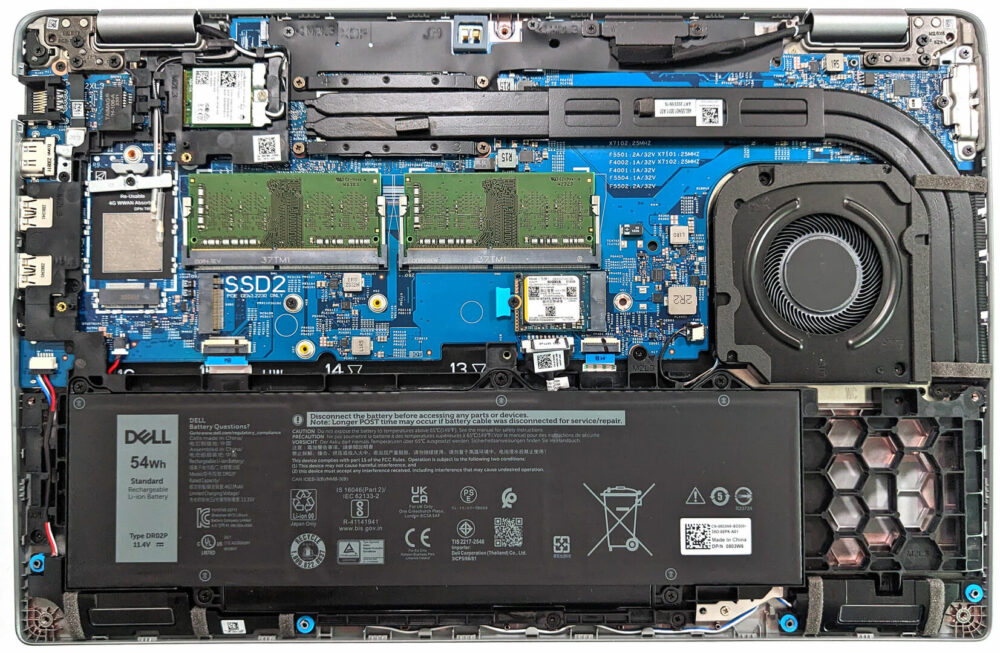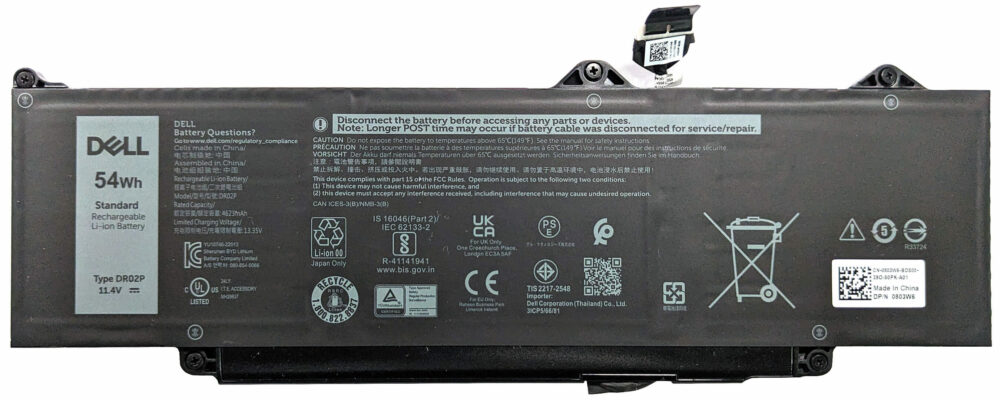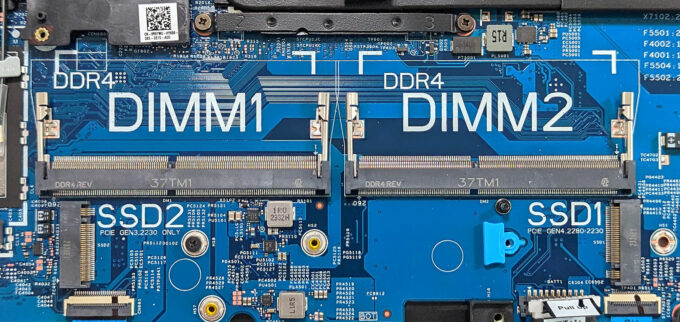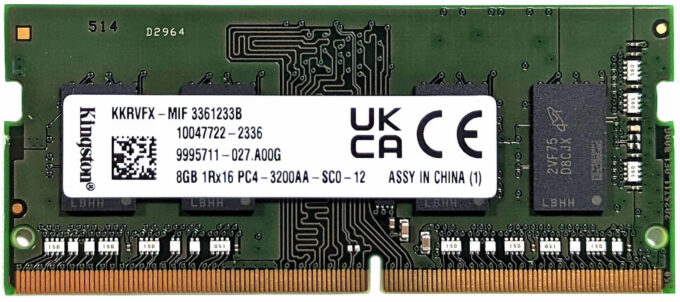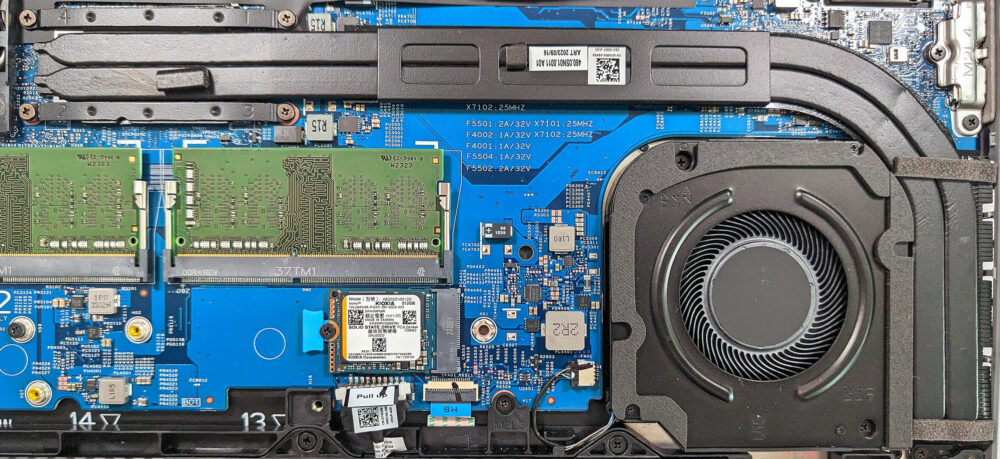How to open Dell Latitude 15 5540 – disassembly and upgrade options
Step 1: Opening the Dell Latitude 15 5540
- Ensure the Dell Latitude 15 5540 is powered off and placed on a soft, clean surface to prevent scratches or damage.
- Remove the 8 captive Phillips-head screws from the bottom of the laptop. The screw in the top right corner will slightly raise the panel, aiding in the opening process.
- Lift the plate in one of the zones behind the hinges to create a gap, then use a thin plastic tool to pry the back before working your way around the sides and the front.
Caution: The backside may be difficult to pry. Be gentle to avoid damaging the internal clips or the laptop casing.
Step 2: Removing the Battery
- Detach the battery connector from the motherboard to disconnect the power.
- Remove the 5 Phillips-head screws holding the 54Wh battery, then carefully lift it away from the chassis.
More info: The optional 54Wh battery provides up to 12 hours and 30 minutes of web browsing or 8 hours and 20 minutes of video playback, offering good battery life.
Memory Upgrade
Identify the two SODIMM slots available for memory expansion. This laptop supports up to 64GB of RAM in dual-channel mode.
More info: Devices with U-series CPUs are equipped with DDR4-3200MHz memory, while models with P-series processors support DDR5-4800MHz or 5200MHz RAM.
You can buy DDR4 RAM modules here: Buy from Amazon.com (#CommissionsEarned)
You can buy DDR5 RAM modules here: Buy from Amazon.com (#CommissionsEarned)
Storage Upgrade
- Locate the two M.2 slots for SSD upgrades. The left slot supports 2230 Gen 3 SSDs, while the right slot is compatible with both 2230 and 2280 Gen 4 SSDs.
- Consider upgrading or adding SSDs to increase storage space and enhance system speed and responsiveness.
Hint: Don’t forget to check out our Top M.2 SSDs Performance Rankings for insights on the best storage options available.
You can buy Gen 3 M.2 2230 SSD modules here: Buy from Amazon.com (#CommissionsEarned)
You can buy Gen 4 M.2 SSD modules here: Buy from Amazon.com (#CommissionsEarned)
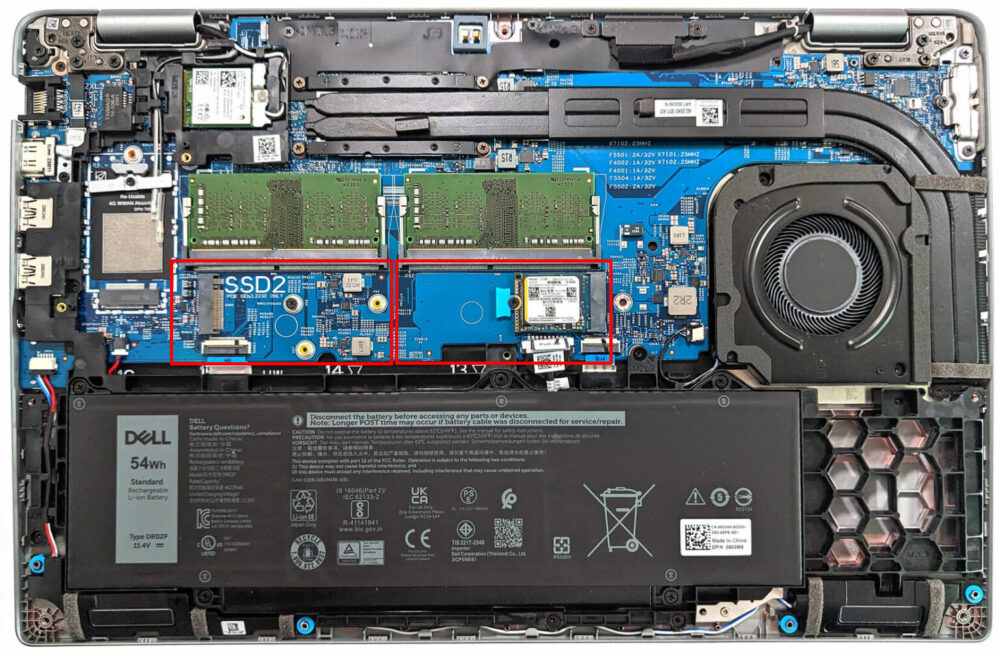
Cooling System Overview
Inspect the cooling system, which includes one large fan, two long heat pipes, a side-mounted heat sink, and a heat spreader, designed to efficiently manage the thermal output of the device.

